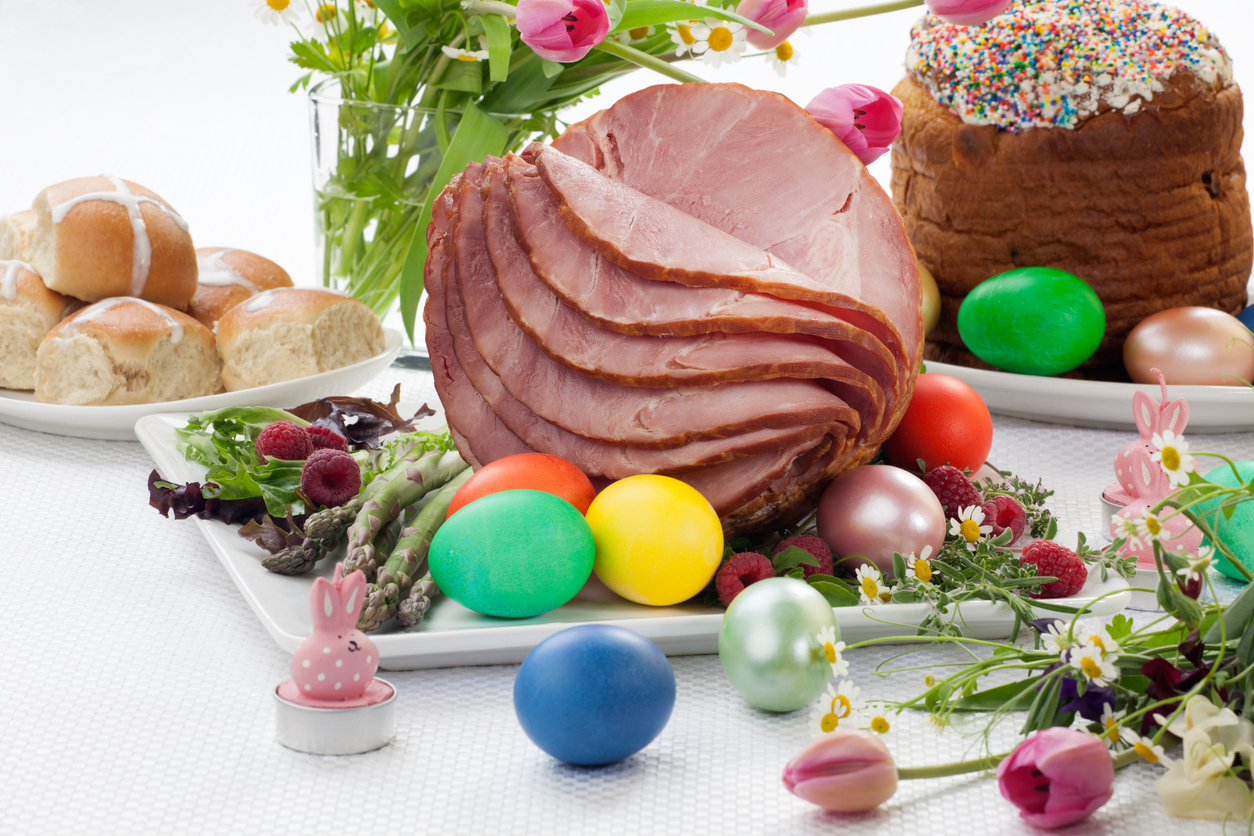Dyeing eggs and egg hunts are two of the most popular Easter traditions for children. As we get older, the allure of egg decorating often lingers such that we branch out beyond the tablets and vinegar to fancy up our eggs with paint, silk tie designs, shaving cream, natural food dyes like beets, and berries, or other crafty methods. Since opportunities for food-related illness are as plentiful as design options, we have a few tips to pass along to help keep your holiday as bright and fun as your decorated eggs.
Tips for Handling Eggs:
- Inspect your eggs before buying to be sure they are clean and crack-free, as bacteria can enter an egg through a crack (University of Nebraska).
- Store your eggs in the carton in the body of the refrigerator rather than in the door. The door is the warmest part of the fridge, and if frequently opened may not maintain a cool enough temperature to keep eggs safe.
- Thoroughly wash and rinse hands before handling eggs for cooking or dyeing.
- Thoroughly cook eggs until both the yolk and white are firm to kill Salmonella and other harmful bacteria (Foodsafety.gov).
- When preparing for a hunt, avoid hiding eggs anywhere they could “come into contact with pets, wild animals, birds, reptiles, insects, or lawn chemicals” (University of Nebraska).
- Eat eggs or return them to the refrigerator within two hours as long as the shell is intact. Cracked eggs should be discarded, and saved eggs should be eaten within one week (University of Nebraska.)
Though the egg may be the focal point of the fun, it is less likely to be the focal point of the meal. The following are some tips for safely preparing popular Easter meats:
- Pre-cooked ham that is vacuum packaged or canned from a federally inspected plant may be eaten without cooking or maybe warmed to an internal temperature of 145° F (Foodsafety.gov).
- Uncooked ham or ham packaged in a plant that is not federally inspected must be cooked to a minimum internal temperature of 145° F (Foodsafety.gov).
- If you are unsure whether or not your ham is pre-cooked, look at the label. “Ham that is not ready-to-eat but has the appearance of ready-to-eat products will bear a statement on the label indicating the product needs cooking” (Foodsafety.gov).
- If lamb is your tradition, you will still look for an internal temperature of 145° F regardless of the cut (University of Oklahoma”).
- The US Department of Agriculture recommends an internal temperature of 145° F for various cuts of beef including roasts and steak, while ground beef (and any other ground meat) should be at least 160° F.
- Chicken and other poultry should be brought to an internal temperature of 165° F (US Department of Agriculture).
Whatever your Easter plans may be, our staff at Waitte’s Insurance Agency wish you a happy and healthy spring holiday! Stop by or give us a call when you are ready to discuss your unique insurance needs.
"Egg Handling and Safety Tips" University of Nebraska Lincoln

